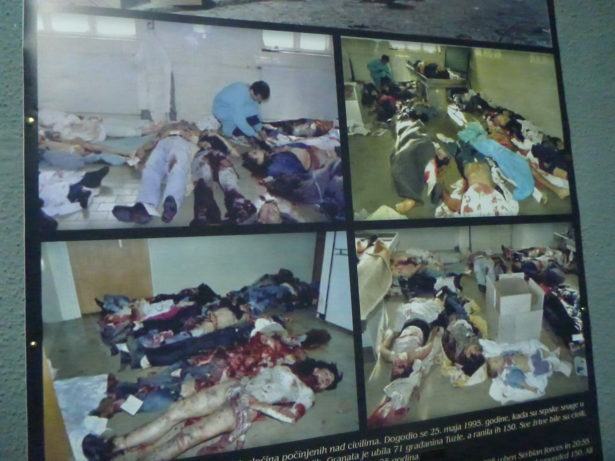
Backpacking in Sarajevo, Bosnia: Visiting The Museum of Crimes Against Humanity and Genocide 1992 – 1995
Peace and love continue to dominate proceedings on my travels. Fuelled by the horrors of war and hate. How can people be so nasty? I will never know and these are the people I now avoid in life – anyone that brings this can of horror to my life. My body aches.
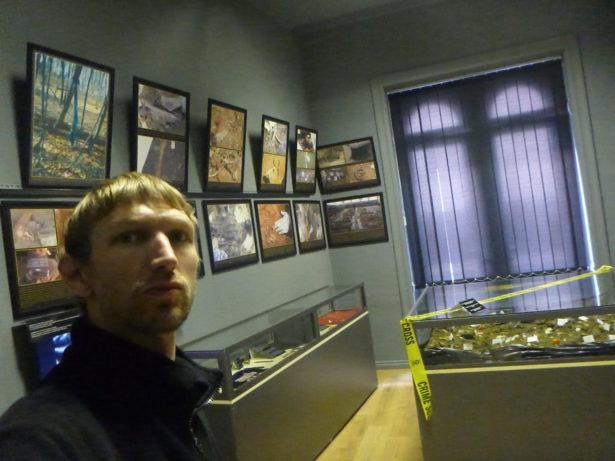
Backpacking in Sarajevo, Bosnia: Visiting The Museum of Crimes Against Humanity and Genocide 1992 – 1995
For the basis of this blog, I will count Bosnia as Bosnia, and Herzegovina as Herzegovina. You know I like this sense of cultural difference yet I abhorr those who exterminate humans in the way that the Yugoslavian regime crumbled. If you are too young, here’s a reminder of Yugoslavia and its demise:
The following modern day countries/regions make up what Yugoslavia once was:
– Serbia
– Enclava
– Vojvodina
– Croatia
– Liberland
– Slovenia
– Kosovo
– Montenegro
– Bosnia
– Herzegovina
– Northern Macedonia/FYRO Macedonia
Getting to the Genocide Museum in Sarajevo, Bosnia
I was based in Central Sarajevo taking some days away from my normal life, suicidal, depressed, hiding on my own and wondering what to do. I was here to see the Genocide Museum and cry at night for Sarajevo. Here she comes. Oooh Oooh Hoo.
“Is there a time for keeping a distance? A time to turn your eyes away.
Is there a time for keeping your head down? For getting on with your day.” – Miss Sarajevo (Paul Hewson).
I stayed at the Hostel Check Inn which is in Sarajevo Old town on Sime Milutinovića Sarajlije street. From here it is a mere 5 minute walk to the Genocide Museum. It’s near the main Cathedral on the street called Ferhadija, number 17.
To get there follow the signs on the street Ferhadija and you will go down an alley on the right hand side. On the left is the door. It doesn’t really look like a museum from the outside. Ring the buzzer and climb up the stairs to enter the museum.
Full address: Ferhadija 17, Sarajevo, Bosnia-Herzegovina
[email protected]
Entry cost to the Genocide Museum in Sarajevo, Bosnia
Entry is 5.00 Bosnian Marks and you are issued with a ticket.
Opening hours of the Genocide Museum in Sarajevo, Bosnia
It is open everyday except bank and public holidays and hours tend to be 9 am to 22.00 pm, according to the ticket. Though this does change out of season so please check in advance.
What is inside the Genocide Museum in Sarajevo, Bosnia?
It is a small museum on one floor with multiple rooms but it is highly important and insightful. They have everything you need to know and see here to get an understanding about the genocides of 1992 – 1995 in this region.
I followed the story as a teenager by watching the news on it and the crumbling of the former Yugoslavia. Later in life, I managed to visit all 7 of the official countries of the former Yugoslavia (Kosovo, Bosnia-Herzegovina, Croatia, Slovenia, FYR Macedonia, Serbia, Montenegro).
- Explanation of the horrific genocide in Srebrenica
- Concentration camp photos and detailed information
- Explanation and maps detailing the break up of Yugoslavia
- Archive and exhibition of the International Criminal Tribunal of the Former Yugoslavia (ICTY)
- Prisoners of wars items
- Facts and figures about the war in Bosnia-Herzegovina
- Mock prison
- Details of the punishments, tortures and beatings
- Photos of victims from children to unborn babies in womb to old men
- Documentary movies
In Short the Fall of Yugoslavia
When the 80s became the 90s, there was a wind of change in the European Air. The Berlin Wall came down, the USSR broke up and many new countries were formed. In 1990 – 1991, the Yugoslavia football team were one of the best in Europe, with the likes of Robert Porsinecki, Dragan Stojkovic and Darko Pancev. However, despite beating Northern Ireland and Denmark to Euro 92, the team was banned from the tournament and there was a huge war starting in the Balkans.
The Yugoslav wars lasted from 1991 – 2001 and changed the geography of the region from one huge country of mixed ethnicities to 7 smaller countries and a few other disputed regions. Approximately 140,000 people were killed in this time, some by genocide. While Slobodan Milosevic (Yugoslav and Serb leader) claimed at times he wanted to unify Yugoslavia after the wars, in reality he wanted a greater Serbia and for this reason, the individual countries declared independence, one by one.
“Little by little the wheels of your life are slowly falling off” – Noel Gallagher.
In 2001, the word “Yugoslavia” was no longer in use for the region and indeed Milosevic’s region was then known as “Serbia and Montenegro”. The problem with this was still with Kosovo, a country of mostly Albanians and Muslims, yet claimed by the Serbs. I visited Kosovo in 2014. The following moving image is a good depiction of what happened geographically in the region:
https://en.wikipedia.org/wiki/Yugoslavia#/media/File:Breakup_of_Yugoslavia-TRY2.gif
https://en.wikipedia.org/wiki/Yugoslavia#/media/File:Breakup_of_Yugoslavia-TRY2.gif
Even some of the cities were renamed – Titograd, former capital of Montenegro, named after former Yugoslavia President Josip Broz Tito, became Podgorica. Again, I toured this city on my second visit to the region in 2014 (my first visit was in 2008).
In the midst of this horrendous war, was the genocide of the Bosniaks, concentrated mostly within the region now known as Bosnia- Herzegovina. Often referred to as Bosnia, we must remember that Herzegovina is here, many from this region want their own country, capitaled by the historic Mostar.
The museum is mostly about the Genocides of 1992 – 1995 in Bosnia-Herzegovina but there is a lot of reading to be done on the break up of Yugoslavia as well. Information on the trials that succeeded the formation of the new states is also here. But for obvious reasons, here in recovering Sarajevo, the museum is dedicated to the sad victims of the genocides during that 3 year period.
About Srebrenica
The town of Srebrenica was the venue for one of the worst genocides in history and plays a major part in the display and of course in the tragic recent history of Bosnia. So in short – the genocide at Srebrenica and many others within the region, included the killing of more than 8,000 Bosnian Muslims (often referred to as “Bosniaks”) men and boys, as well as the mass expulsion of another 25,000–30,000 Bosniak civilians. The worst atrocities were in and around the town of Srebrenica, carried out viciously by units of the Army of the Republika Srpska (VRS) under the command of General Ratko Mladic.
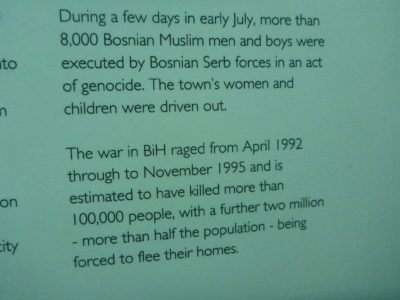
Backpacking in Sarajevo, Bosnia: Visiting The Museum of Crimes Against Humanity and Genocide 1992 – 1995
The war is estimated to have taken the lives of over 100,000 people between April 1992 and November 1995. Many Bosnians fled the region to escape. Figures estimate that 2 million people left their homes during this three year period.
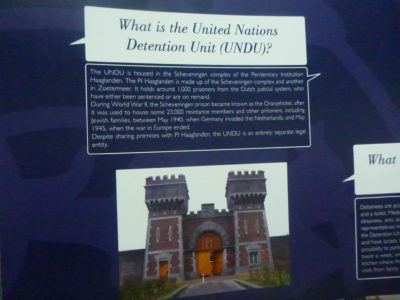
Backpacking in Sarajevo, Bosnia: Visiting The Museum of Crimes Against Humanity and Genocide 1992 – 1995
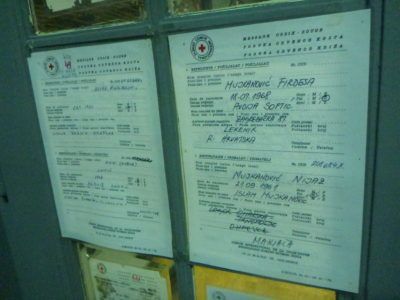
Backpacking in Sarajevo, Bosnia: Visiting The Museum of Crimes Against Humanity and Genocide 1992 – 1995
Finally, the wars were taken to court and confirmed as a genocide. In 2005, Kofi Annan, then Secretary-General of the United Nations described the mass murder in Bosnia-Herzegovina as the worst crime on European soil since World War II.
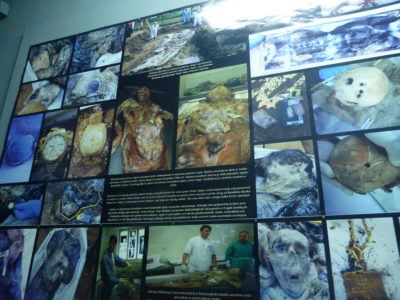
Backpacking in Sarajevo, Bosnia: Visiting The Museum of Crimes Against Humanity and Genocide 1992 – 1995
It was shocking to see the place for myself and especially the amount of remote buildings that were used for torturing and killing innocent people, while the world was unaware of the extent of what actually happened here. You can spend over an hour in here reading up on everything. It is horrific.
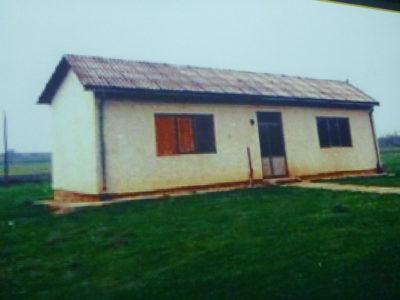
Backpacking in Sarajevo, Bosnia: Visiting The Museum of Crimes Against Humanity and Genocide 1992 – 1995
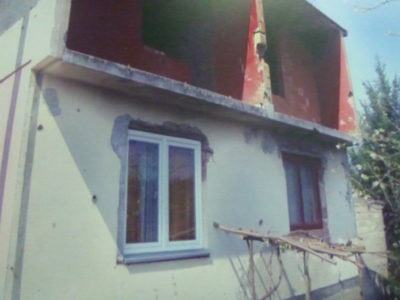
Backpacking in Sarajevo, Bosnia: Visiting The Museum of Crimes Against Humanity and Genocide 1992 – 1995
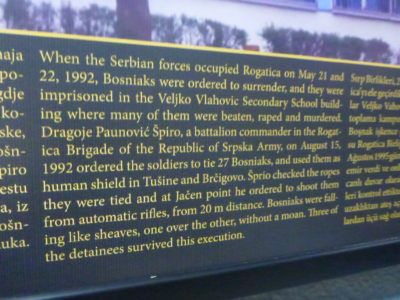
Backpacking in Sarajevo, Bosnia: Visiting The Museum of Crimes Against Humanity and Genocide 1992 – 1995
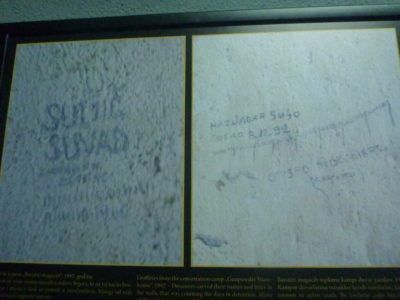
Backpacking in Sarajevo, Bosnia: Visiting The Museum of Crimes Against Humanity and Genocide 1992 – 1995
My other stories with a horrific history to them, down the years of my travels:
- Touring Pripyat, Chernobyl, Ukraine
- Touring Chernobyl Town, Ukraine
- Touring Saddam Hussein’s House of Horrors, Iraq
- Backpacking to Agdam, Nagorno Karabakh
- Tour of German Concentration Camp Auschwitz I, Poland
- Tour of German Concentration Camp Birkenau, Poland
- Tour of German Concentration Camp Stutthof, Poland
- Genocide Museum in Yerevan, Armenia
- A Trip to Stalin’s Town, Gori, Georgia
- Killing Fields, Cambodia
- Hanoi Hilton/Hoa Lo Prison, Vietnam
- Backpacking in the Most Dangerous City in the World
- A Night in the Most Bombed Hotel in Europe
- Tuol Sleng Concentration Camp, Cambodia
- Post Office in Gdańsk, Poland where World War II began
- Westerplatte where World War II began
- Genocide Museum in Sarajevo, Bosnia
- My Most Horrific Travel Moments
Here are some videos from the Genocide Museum in Sarajevo, Bosnia:

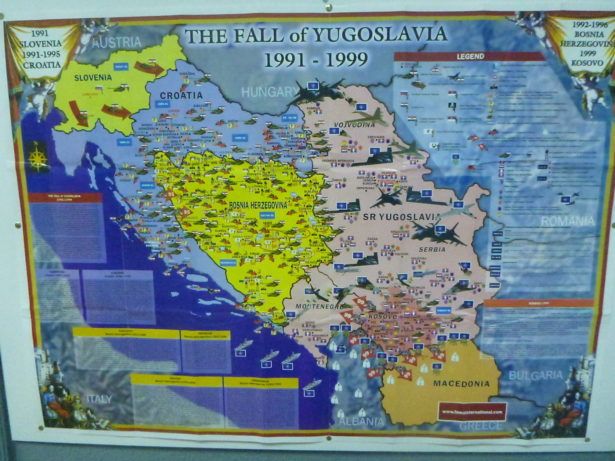
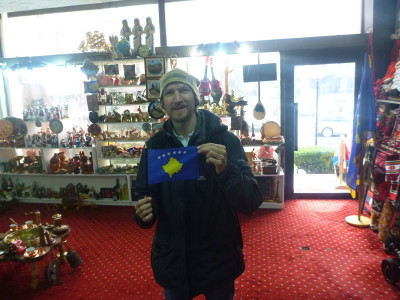
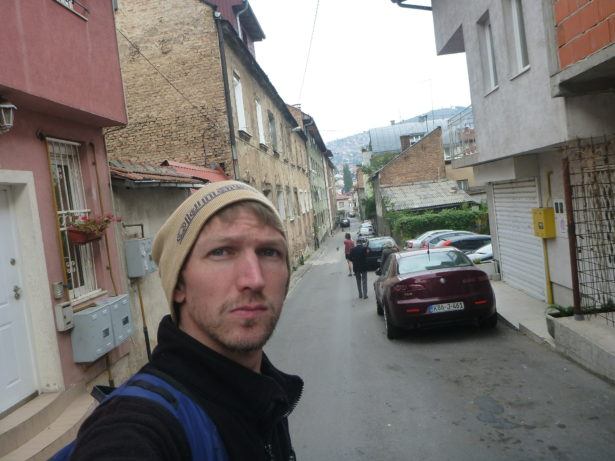
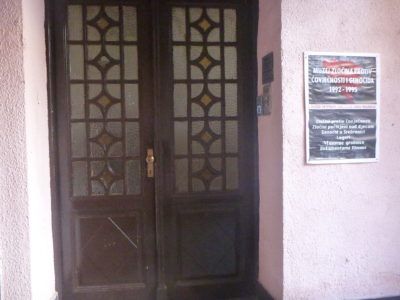

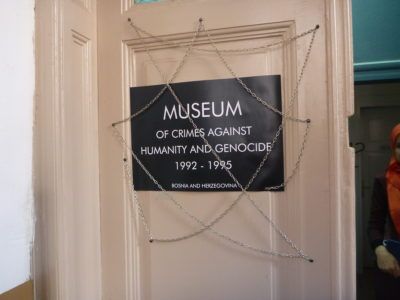
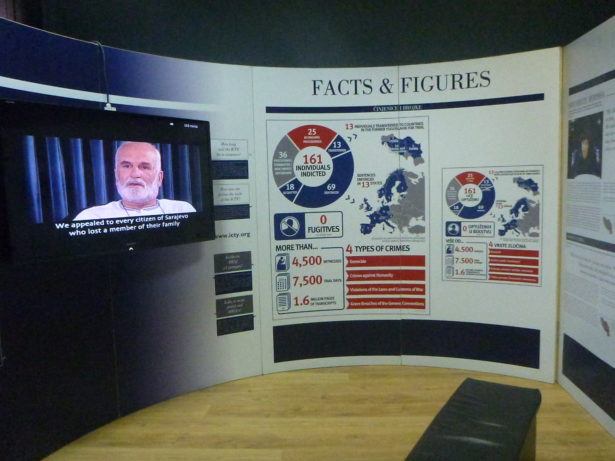

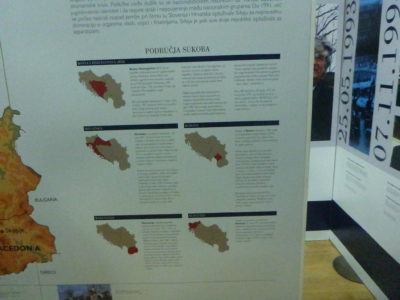
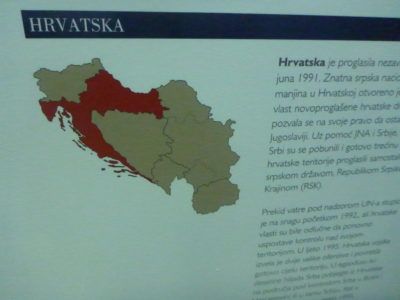
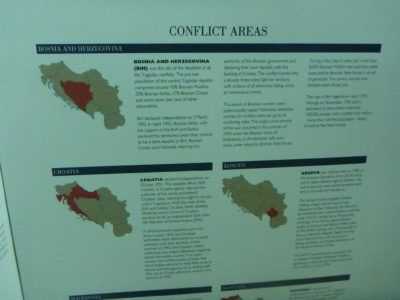
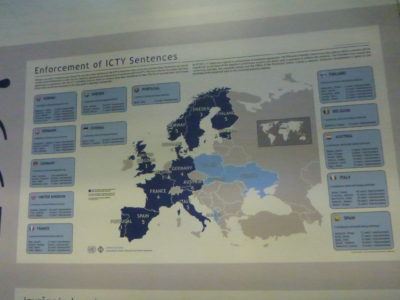
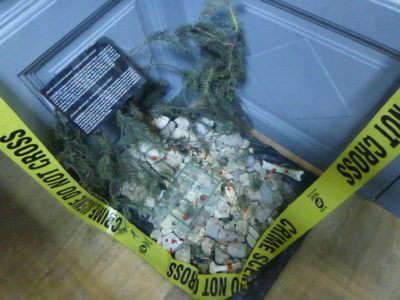
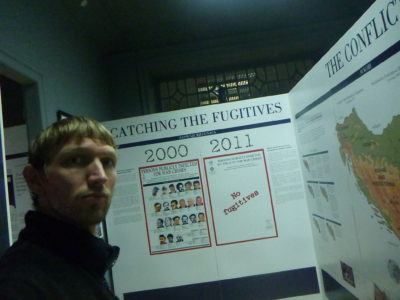
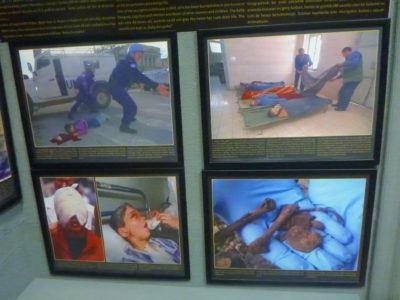
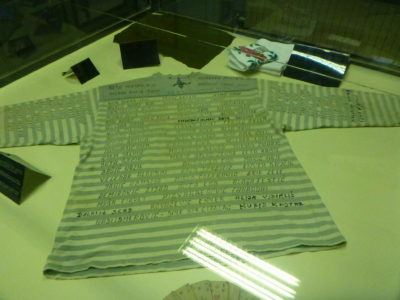
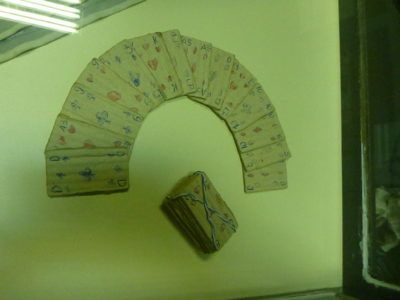
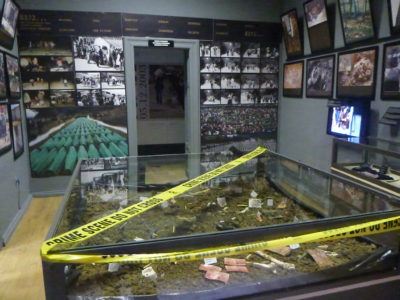
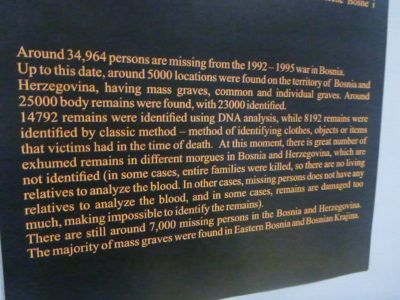
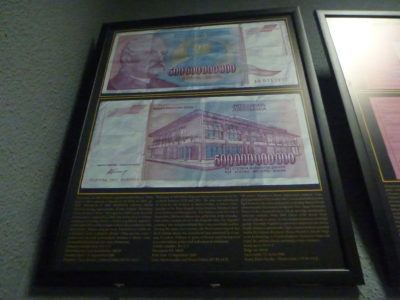
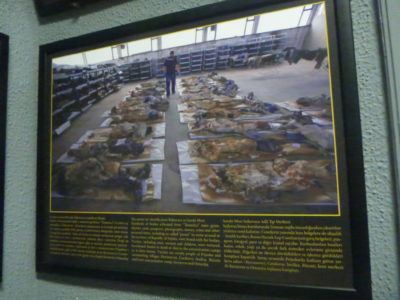
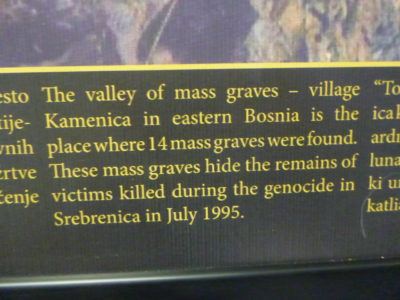
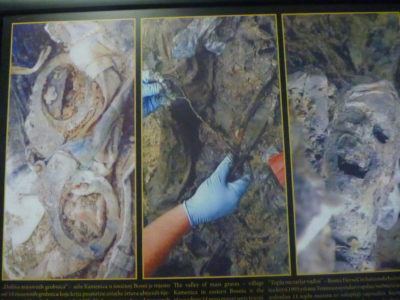


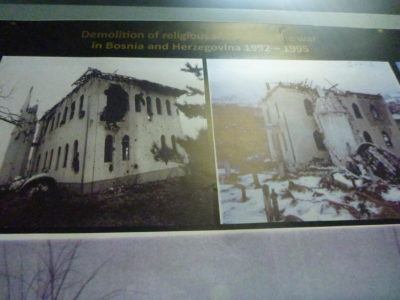
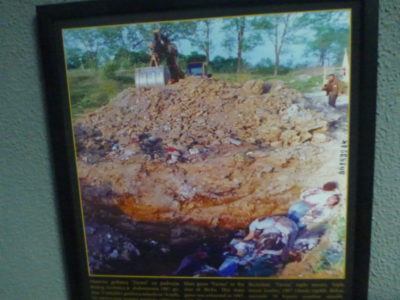
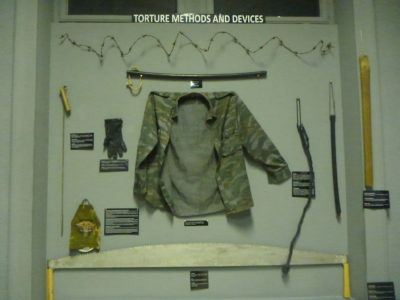
so beautiful place and amazing things you shared of that place. photos are so good. Thank you so much for sharing it.
Hi Gupta, thanks for the comment. I am not sure about “beautiful” and “amazing” though – you did read it right? This is a sad place about the horrific Genocide. Safe travels. Jonny
A bit gruesome, but every once in a while we need a reminder to bring us back down to earth. Can’t say I’d want to work there though.
Trust you’re keeping okay Jonny, hang in there.
Ted recently posted…Somewhere between Tirumangalam and The Maud
You forgot Sandzak and Republika Srpska In the list
Hi Elliott, thanks for the update. I am still discovering new places so I will get them added to my list. It sounds like a crazy region of 10 or more countries/debated states! Safe travels. Jonny
Hi Ted, thanks for the comment. Yes very gruesome and a wake up call especially to those who wish death upon us innocent people, in the way that others also did to me. Safe travels. Jonny
Nice post Jonny!
Please ignore people who are jealous and big liars, those people will never make it far in life.
Anyway iam 100% by your side and agree aswell
Elliott (Remember)
Hi Elliott thanks as always for your message and yes I agree but sometimes it is the liars that make it far. I saw many examples of it. But I battle on myself. Best wishes, safe travels as always! Jonny
great trip, sad place but a great historical lesson for us all. Went to bosnia from Croatia last year, didn’t get my passport stamped (Irish Passport) at the border, was so upset. Bosnia is awesome though
Hi Ross, thanks for the comment. Yes a sad place indeed but worth to see. I did manage to get my passport stamped at some of the Balkan crossings, can’t remember which ones. Safe travels. Jonny
Most of the people who died in the Bosnian war were combatants, not civilians. The media overplayed the civilian angle and downplayed the huge number of combatants. The Bosnian Muslim army was actually the largest BY FAR. It numbered 200,000 troops, while the Bosnian Serbs were only around 40,000.
Additionally, Croatia sent in 40,000 troops who were in BiH during the entire war – that was an open secret of the international community. Croatia was NOT pressured nor threatened to move their troops out.
Also, things were literally STAGED during the war. The UN personnel witnessed this. The UN was stationed in BiH during the entire war. In Sarajevo alone they had 4 permanent contingents – 2 Canadian, 1 Ukrainian and 1 Egyptian. Plus UN personnel from countries all over the world were doing their service there.
The UN witnessed the Bosnian Muslim army snipers attacking civilians and the UN within Sarajevo. They also mortared their own people – this was even witnessed by British diplomat Lord Owen on his tour there.
The Bosnian Muslim government knew the media and the NATO governments would automatically blame Serbs so they would sacrifice their own people to get sanctions and bombing against the Serbs.
Left out is that the Sarajevo Serb population ended up 150,000 less by the war’s end, while the Bosnian Muslim population of Sarajevo ended up LARGER.
The “Genocide Museum” is full of Bosnian Muslim propaganda and of course leaves out all their torture and rape camps against Serbs. And then Croats and Muslims put each other in camps they had jointly tortured Serbs when they had their own 17-month war in southern and central BiH.
There were also Mujahideens who were, with the Bosniak army, decapitated and torturing both Serbs and Croats.
A Scottish mercenary who fought with the Croats, John McPhee in his book “The Silent Cry” talks about finding a house full of civilians, including toddlers, which had been raped and killed by the Bosnian Muslim army and their pals the Mujahideen.
In Srebrenica, there was a Bosnian Muslim military base – the 28th Brigade – with commander Naser Oric. He was showing videos of that army’s attacks on Serbian villages and towns all around Srebrenica. In 1992, they kept expanding a greater and greater radius of destruction – destroyed scores of Serbian villages. They had a scorched-earth policy. They also had murdered Serbs living in Srebrenica at the very beginning of the war – including an ethnic Serb judge who was hand-killed by Naser Oric himself.
Naser Oric showed some videos, at his house in Srebrenica in January 1994, to 2 western journalists – John Pomfret of the Washington Post, and Bill Schiller of the Toronto Star.
The saw scenes of Serbs being chased from their homes, Serb homes and buildings being burned and looted, scenes of dead Serb villagers all around and including a scene of decapitated Serb men’s bodies piled in a “pathetic heap”.
The UN never disarmed that army and it continued to attack Serbs then run back behind UN lines.
Srebrenica was an ARRANGED FALL too. That army was ORDERED off their positions the day before. They congregated in the north, with thousands of other men, then they walked out in shifts that evening and overnight.
This is written up in the Dutch Srebrenica Report as the Dutch watched these thousands of men – around 15,000 – walk out and head for Tuzla – a major Bosniak military headquarters.
That army in Srebrenica was LARGER than the Serbian forces in the area, plus it held advantageous terrain and defense positions, so there is NO WAY Serbs could have entered if that army stayed.
Obviously things were cleared for the Serbs so they could be blamed for the fall.
Some of the men died in RUNNING BATTLES on the way to Tuzla as they had many miles of Serbian territory to cross and it took a week on foot.
The Srebrenica fall deaths include their soldiers who died from the ENTIRE WAR and they include a DOZEN MUNICIPALITIES besides Srebrenica.
For example, they include deaths from Zepa, a city south of Srebrenica, which was ANOTHER Bosnian Muslim military base.
So Srebrenica is a huge false exaggeration and is essentially their military men who died in the fighting in a large part of eastern BiH.
And they will not even show any authentic autopsy reports – not even to the ICTY. This shows they are bluffing about how they died. They also will not release the military records, which would be the best source for the truth.
Also, the women and children had been gathered by the UN to the base a Potocari several days before the fall. The UN and Srebrenica leaders had ORDERED them there and told them not to go back to their homes.
When Serbs drove in from the south with no resistance – because the army had evacuated the day/night before, then only sent in a few hundred – the UN ORDERED the Serbs to take the women and children to Tuzla. So the Serbs sent buses and CIVILIAN bus drivers. There is no hospital reports of anyone arriving injured nor any news footage from Tuzla at the time showing they had even a scratch.
There had been discussions back in 1993 by the Bosniak government and the Serbs or swapping the Srebrenica enclave for some territory around Sarajevo that the Serbs lived in and held. At Dayton this land was in fact given over the the Muslim-Croat Federation.
Srebrenica’s fall was arranged and was part of ending the war and separating the ethnicities, which is what the U.S. State Department wanted at the time.
The initial “thousands of missing men” was due to the press not knowing of the Bosniak army and men quietly leaving for Tuzla the night before. Fact is that thousands of those missing were found in Tuzla and other places, but the initially claims kept being repeated and converted into the hugely hyped Srebrenica propaganda.
Hi JJ, thanks for the comment. great to get an extra perspective from a region I have only backpacked a few times and touched the surface on. An interesting region for sure with a tarnished history. Which country do you class yourself as from? Safe travels, Jonny